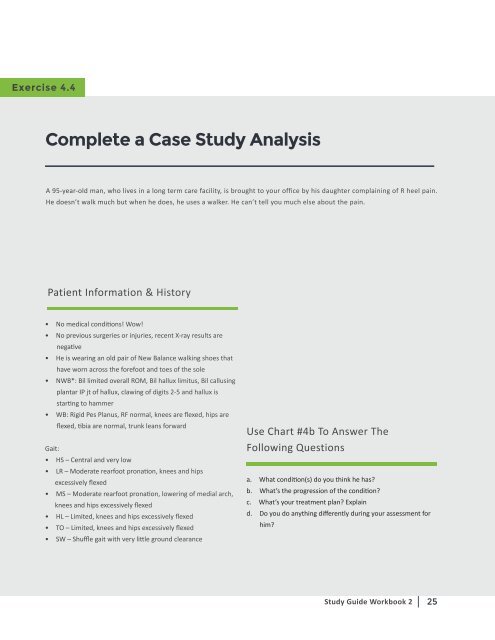OER - Pathomechanics, Conditions & Diseases
You also want an ePaper? Increase the reach of your titles
YUMPU automatically turns print PDFs into web optimized ePapers that Google loves.
Exercise 4.4<br />
Complete a Case Study Analysis<br />
A 95-year-old man, who lives in a long term care facility, is brought to your office by his daughter complaining of R heel pain.<br />
He doesn’t walk much but when he does, he uses a walker. He can’t tell you much else about the pain.<br />
Patient Information & History<br />
• No medical conditions! Wow!<br />
• No previous surgeries or injuries, recent X-ray results are<br />
negative<br />
• He is wearing an old pair of New Balance walking shoes that<br />
have worn across the forefoot and toes of the sole<br />
• NWB*: Bil limited overall ROM, Bil hallux limitus, Bil callusing<br />
plantar IP jt of hallux, clawing of digits 2-5 and hallux is<br />
starting to hammer<br />
• WB: Rigid Pes Planus, RF normal, knees are flexed, hips are<br />
flexed, tibia are normal, trunk leans forward<br />
Gait:<br />
• HS – Central and very low<br />
• LR – Moderate rearfoot pronation, knees and hips<br />
excessively flexed<br />
• MS – Moderate rearfoot pronation, lowering of medial arch,<br />
knees and hips excessively flexed<br />
• HL – Limited, knees and hips excessively flexed<br />
• TO – Limited, knees and hips excessively flexed<br />
• SW – Shuffle gait with very little ground clearance<br />
Use Chart #4b To Answer The<br />
Following Questions<br />
a. What condition(s) do you think he has?<br />
b. What’s the progression of the condition?<br />
c. What’s your treatment plan? Explain<br />
d. Do you do anything differently during your assessment for<br />
him?<br />
Study Guide Workbook 2<br />
25


